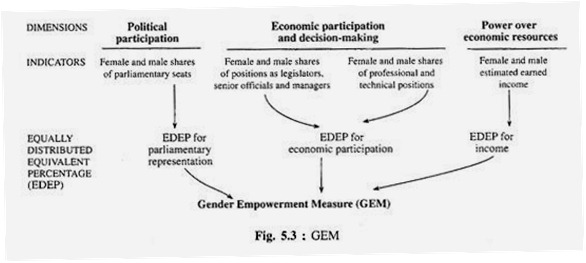This article provides a short note on Gender Empowerment Measure (GEM) to End Up Gender Inequality.
In developing countries, as women are subject to various forms of inequality they are caught in ‘inequality trap.’ This gender inequality, being undesirable, needs to be closed.
This requires empowerment of women. In this respect, women themselves have to come forward. In other words, empowerment of women is linked to the ‘agency of women’. Amartya Sen, while emphasising the importance of women’s agencies for securing gender justice and hence social progress, argues that gender inequality does not decline automatically with the process of economic growth.
In this respect, activities of women’s organisations and other forms of agency that promote, say, female labour force literacy, female literacy, demographic change, etc., are of crucial importance, as far as empowerment of women is concerned. Empowering does not come from above; it has to come from the grassroots level. When this happens, women’s empowerment then influences positively on the lives of both women and men and children. This then brings about both development and social progress.
ADVERTISEMENTS:
Five elements of women’s empowerment are:
(i) Education,
(ii) Ownership rights over property and assets,
(iii) Position and status of women in the labour market,
ADVERTISEMENTS:
(iv) Opportunities to work, and
(v) Familiar and societal attitude regarding women’s employment. For overall development of a society, empowerment of women is prerequisite.
The Human Development Report, 1995 focusing on women’s opportunities rather than their capabilities introduced ‘Gender Empowerment Measure’ or GEM.
This index is constructed highlighting the three key areas:
ADVERTISEMENTS:
(i) political participation and decision-making power as measured by the percentage shares of parliamentary seats of both female and male,
(ii) economic participation and decision-making power, as measured by two indicators—percentage shares of positions as legislators, senior administrators and managers of both sexes and women’s and men’s percentages shares in professional and technical positions, and
(iii) power or authority over economic resources, as measured by contributions of earned income of both women and men. GEM is simply the average of these three indices. The essence of GEM has been shown in Fig. 5.3.
